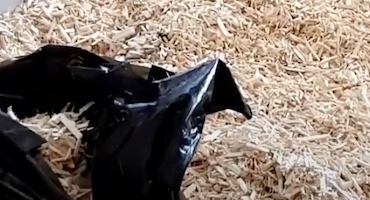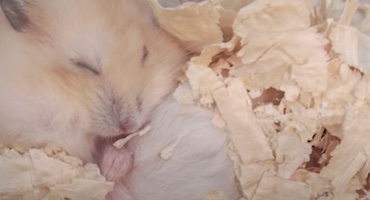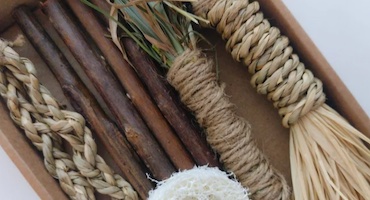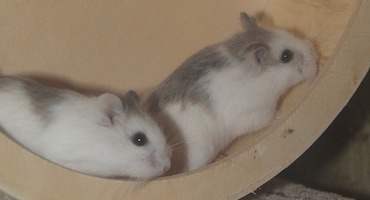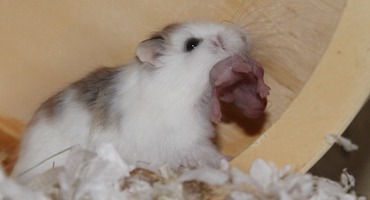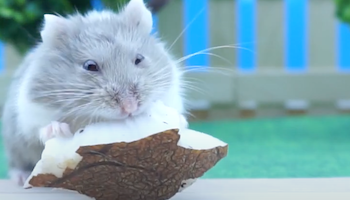Most pet owners often wonder what the safe foods for their hamsters are and which ones can be dangerous for them. If you have a hamster at home and you are wondering ‘can hamsters eat kale,’ then the answer is yes! Hamsters can eat kale! In fact, your furry friends quite enjoy nibbling on a few tasty kale leaves that you offer them.
Here is everything you need to know about feeding your hamsters kale, which breeds can eat it and how much quantity you should give them.
Syrian hamsters are a more giant breed of hamsters which make excellent pets for those who want to own a furry little friend. Kale is a leafy green vegetable which you should feed in moderation to your little hamsters due to the high water, sugar, and acid content in it. Give your Syrian hamsters a small Kale leaf just once a week.
If you have Campbell’s dwarf hamsters at home, then you already know that these hamsters are a smaller species of hamsters as compared to Syrian hamsters. Since kale has a very high sugar content, it is best that you do not give kale to your Dwarf hamsters, as these hamsters are very prone to diabetes and obesity.
Winter whites dwarf hamsters are the same; they are incredibly prone to developing diabetes and obesity, and it is best that you do not feed them kale for this reason.
Roborovski hamsters are similar to Syrian hamsters, meaning they are a larger species of hamsters, more robust and well built, and can digest small amounts of sugary foods. You can feed your Roborovski hamsters a small piece of Kale leaf once a week only.
Finally, Chinese hamsters are another species of tiny, grey, dwarf hamsters which look extremely cute and make wonderful pets. Due to their small size and delicate digestive systems, you should avoid feeding your Chinese hamsters kale leaves due to the high water content, sugar, and acidity in kale leaves.
There are several species of hamsters still existing in the wild, where they live as scavengers and hunt for their food. Here, in the wild, the hamsters generally survive on a diet of wild berries, nuts, fruits, vegetables, leaves, grains, seeds, and anything else they can hunt and eat from the ground. Occasionally, the wild hamsters also eat small insects, frogs, lizards and other such small animals they can get their hands on.
Domesticated hamsters eat a diet of exceptional hamster food which you can buy from the pet stores. However, you should also give them the occasional safe treats just for a change of taste. These treats can be little pieces of fruits, vegetables, grains and seeds, leaves, and nuts. It is essential that you know about the safe foods and treats which you can give your hamsters so that you do not overfeed them or make them sick.
Are there any health benefits to feeding your hamsters kale?
The leafy green vegetable known as kale has a lot of great health benefits for your little hamsters. Kale is full of Vitamins and minerals, mainly Vitamin A, Vitamin C, dietary, and water.
Vitamin A is excellent for your little hamsters as it protects your hamster’s eyesight from blurry vision and other eye-related problems while boosting their regular eyesight. The Vitamin A in kale also supports your hamsters bone health and helps your hamsters in developing a robust immune system which can ward off sickness and diseases.
Vitamin C in Kale is an excellent antioxidant, which means that this Vitamin helps in destroying the free radicals in your hamster’s body and enhancing its immunity. Vitamin C is also great for lowering the risk of heart disease and cholesterol in your hamsters.
The dietary fibers in kale help to regulate your hamster’s digestive system and bowel movements, especially if your hamster is suffering from constipation. The water content in kale is also great for your hamsters if you feed it to them in moderation.
What are the risks of feeding your hamsters kale?
While this leafy green vegetable has a lot of benefits, you should also remember that kale has a very high water and sugar content and is quite acidic. In moderation, it is okay for you to feed your Syrian and Roborovski hamsters kale, however, altogether avoid giving kale to your Dwarf hamsters.
The sugar content in kale can make your hamsters develop diabetes and obesity, while the high water content can cause them to develop diarrhea and subsequently get dehydrated.
Can you feed dried kale to your hamster?
Yes, you can feed your hamsters with dried kale. However, just like any other treat, you should give your hamsters dried kale in moderation. In the dried form, kale might look very tiny and not enough as a treat for your hamsters, however, be careful not to feed them more than one or two small pieces of dried kale.
Can you feed your hamsters Kale stems?
The stems of kale can be quite hard and fibrous, and it can be painful for your hamsters to eat. If you want, you can give a tiny half an inch Kale stem and left to your hamster just to see how they react to it. However, it is best if you feed your hamsters kale leaves only.
Also, remember to thoroughly wash the Kale leaves before you feed them to your hamsters, as you want to remove away all the chemicals, dirt and pesticides from the leaves before your hamster eats it.
How much kale can hamsters eat?
When it comes to your Syrian and Roborovski hamsters, you should feed them one small piece of kale leaves, thoroughly washed, just once a week.
However, as for your Dwarf hamsters like Campbell’s dwarf hamsters, Winter whites dwarf hamsters and Chinese hamsters, you should altogether avoid feeding them kale as this leaf is very high in sugar, water, and acid content and can be harmful to your tiny hamsters.
Conclusion
If you feed your hamsters kale in moderation, it can be quite a healthy and tasty snack for your little furry friends. Keep your hamsters on a strict diet of exceptional hamster food and let them have the occasional safe foods as a treat!
Share
Related Posts
Hamsters are a great addition to anyone's family. They make a great pet to teach your child about [...]
When you get a furry little pet hamster home, one of the first things you worry about is [...]
Your furry little hamster pet is an excellent source of joy to you and other pet owners. When [...]

